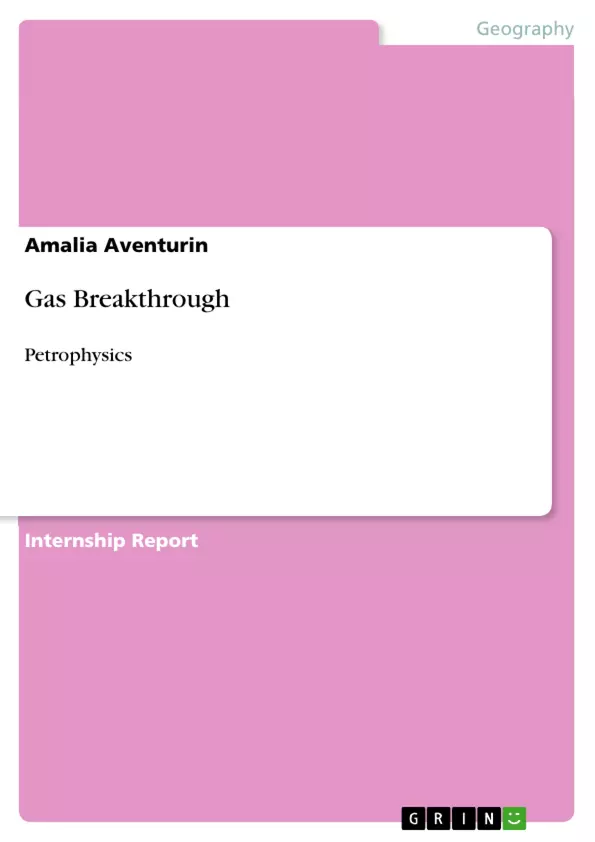By inducing a gas (non-wetting fluid) into a water saturated rock, the gas will displace the water (wetting fluid), but this process just take place, when the capillary pressure is above the capillary entry pressure (gas pressure difference). First the largest pores near the sample surface are drained (drainage process). At higher capillary pressures even the smallest pores are filled with gasThe relation between capillary pressure and pore radius is given by the Washburn equation (1921), “The intrusion of a non-wetting fluid into a cylindrical capillary of radius r only occurs if the capillary pressure Pc […] within a pore is exceeded”: [...]
Inhaltsverzeichnis (Table of Contents)
- I. Introduction: Principle Measurement
- II. Results steady state experiment
- II. 1. Steady-State single-phase gas permeability on a dry sample
- II. 2. Steady-State gas permeability on a saturated sample
- II. 3. Non-steady state single-phase flow on a saturated sample
- III. Error calculation
- IV. Conclusion
- V. References
Zielsetzung und Themenschwerpunkte (Objectives and Key Themes)
This laboratory course focuses on investigating gas breakthrough phenomena in water-saturated rock samples. The primary aim is to determine the permeability of the rock samples under both steady-state and non-steady-state conditions, taking into account the displacement of water by gas.
- Gas breakthrough and its relationship to capillary pressure
- Determination of effective permeability for gas flow
- Klinkenberg correction for compressible gas flow
- Steady-state and non-steady-state gas breakthrough experiments
- Calibration procedures for volume determination
Zusammenfassung der Kapitel (Chapter Summaries)
The introduction provides a theoretical framework for understanding gas breakthrough, highlighting the role of capillary pressure and its relation to pore size. The experiment section outlines the methodologies employed for both steady-state and non-steady-state experiments, analyzing the influence of gas flow on water saturation. The final chapter focuses on error calculations, providing insights into the precision of the results obtained from the laboratory experiments.
Schlüsselwörter (Keywords)
This laboratory course focuses on key topics related to petrophysics, including gas breakthrough, capillary pressure, permeability, effective permeability, steady-state flow, non-steady-state flow, Klinkenberg correction, and experimental calibration techniques. These concepts are essential for understanding fluid flow in porous media.
- Quote paper
- Amalia Aventurin (Author), 2013, Gas Breakthrough, Munich, GRIN Verlag, https://www.grin.com/document/272606



